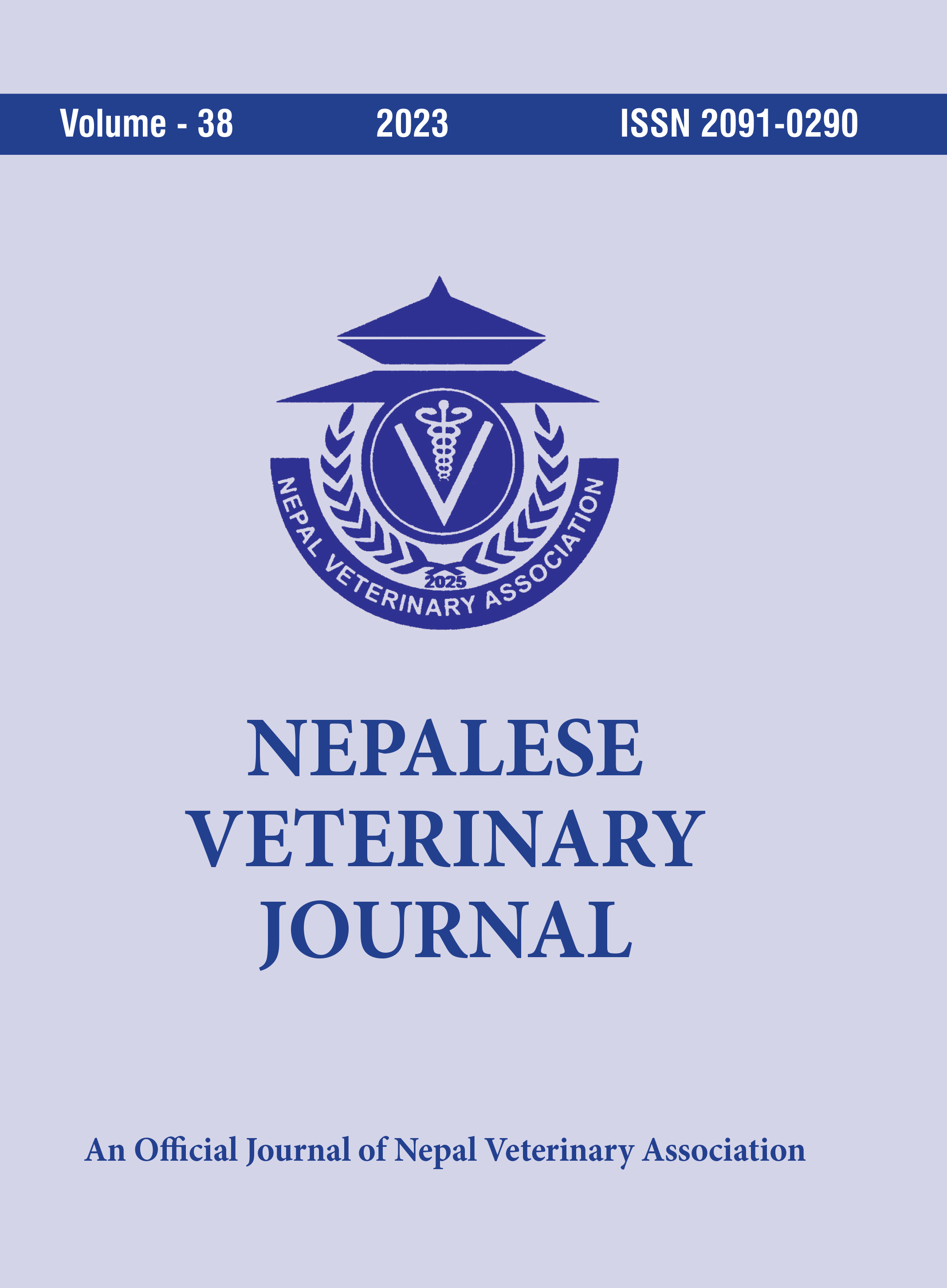Association of Body Condition Score with Lactation and Reproductive Performance in Murrah Cross Buffaloes in Chitwan, Nepal
DOI:
https://doi.org/10.3126/nvj.v38i1.55860Keywords:
BCS, Milk parameters, Reproductive performance, Lactation stages, ChitwanAbstract
Body condition score (BCS) is a precise method for determining the stored energy reserves of dairy animals, which are located in the form of subcutaneous fat tissue, indicated by the animal’s degree of accomplished nutrition, and could be used as a management and selection tool to improve reproductive performance. The objective of this research was to investigate and quantify relationships between BCS and milk production, milk composition, and reproductive performance in Murrah cross buffalo. For this purpose, a semi-structured questionnaire was created and BCS was calculated using a visual technique based on a BCS chart. The sampling approach employed was a completely randomized design. A total of 165 Murrah cross buffaloes from 59 household farms were used in the study, where 130 milk samples were collected and used to assess the milk parameters by lacto-scan. Four BCS groups were namely 2.5-2.99, 3.0-3.49, 3.5-3.99, and 4.0-4.99 where the BCS score was found to grow during the dry period until calving, then decreased as milk production increased. BCS group (3.5-3.99) had higher performance during all the lactation periods with a peak milk yield of 11.4 ± 1.1 kg. At the late lactation stage BCS group (3.5-3.99) showed higher values of SNF (9.77), protein (4.01), and lactose (3.82), followed by BCS groups 4.0-4.49, 3.0-3.49, and 2.5-2.99. At the early, lactation stages, the BCS group (3.5-3.99) had the highest (P<0.01) average milk yield of 10.28, 9.50, 9.37 kg, and the BCS group (4- 4.49) had highest (P<0.01) average fat percent of 9.19, 10.20, and 10.32, respectively. The buffaloes of BCS group 3.5-3.99 had shorter post-partum estrus (61.14days) (P<0.01), fewer services for conception (1.30) (P<0.01) and higher first service conception rate (79.87%) (P<0.01). Similarly, the incidence of associated reproductive disorders such as uterine prolapse, retained placenta, metritis, and mastitis are lowest in BCS group 3.5-3.99 with values of 7.69%, 3.44%, 3.44%, and 6.89% respectively. It can be concluded that the BCS group (3.5–3.99) provided the greatest production results in both milk and reproductive function. For optimal animal lactation and reproductive performance, the nutrition management of dairy cows should be necessarily monitored using the BCS score.
Downloads
Downloads
Published
How to Cite
Issue
Section
License
© Nepal Veterinary Association




